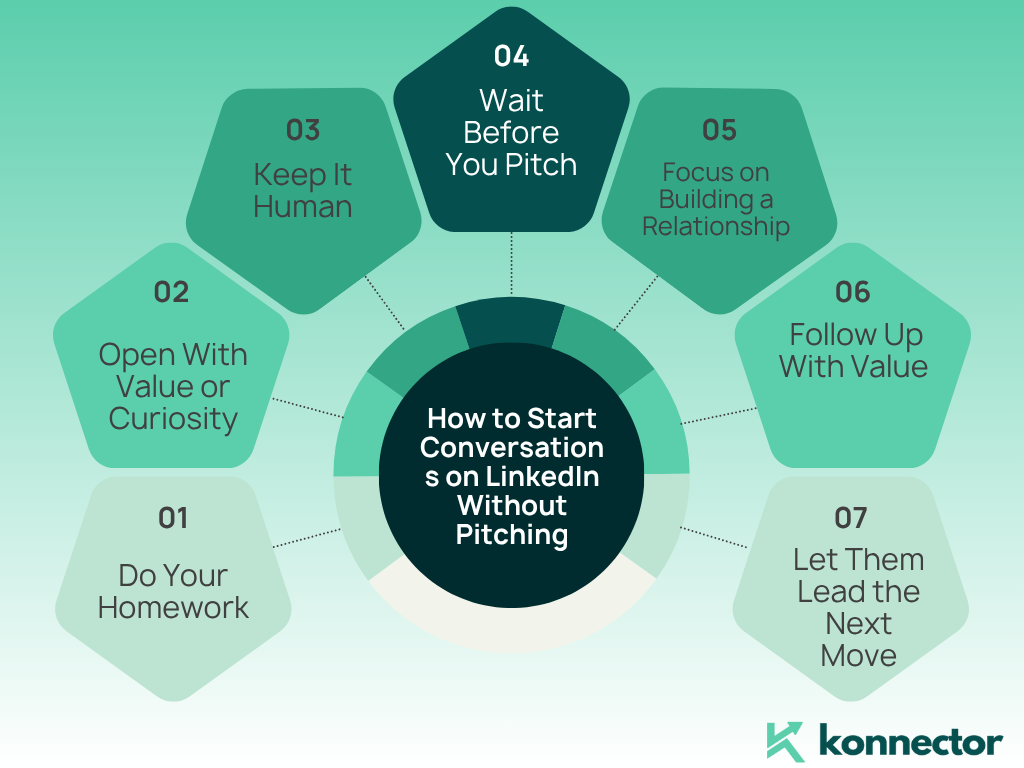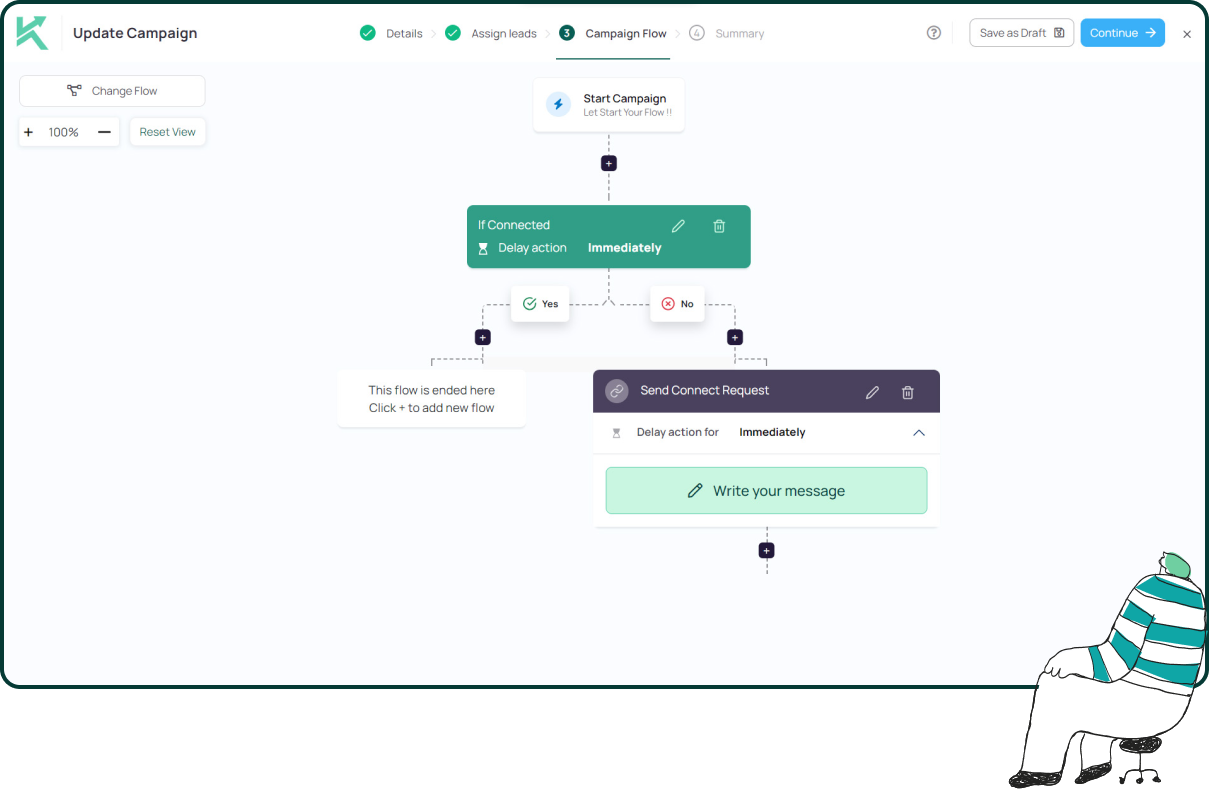7 LinkedIn Outreach Mistakes That Hurt Your Response Rates
LinkedIn messaging can be a powerful channel for LinkedIn outreach, lead generation, and networking, but only if done right. With more than a billion professionals active on the platform, the opportunity to reach decision-makers directly is massive. But that also means inboxes are crowded—and your message needs to stand out. Too many professionals jump into campaigns without understanding what works and what backfires. The result? Messages get ignored, deleted, or reported. Whether you’re a salesperson, recruiter, or founder, understanding the dos and don’ts of outreach is critical. If your messages are being ignored or left on read, one of these seven common mistakes might be the reason.
1. Sending the Same Message to Everyone
Mass messaging may save time, but it costs you credibility. LinkedIn users are savvy—they can instantly spot a copy-paste message that’s been sent to dozens of others. Worse, they may ignore it entirely or even report it as spam. In today’s noisy digital environment, personalization is no longer optional. It’s what separates thoughtful outreach from lazy broadcasting.

Instead of using a one-size-fits-all message, tailor your outreach to the recipient. Reference their job title, a recent LinkedIn post, or something unique about their company. Tools like Sales Navigator or even a quick scroll through their activity feed can offer valuable insights to customize your message.
Mass messaging may save time, but it costs you credibility.
If you’re running a campaign at scale, use dynamic tags or AI-generated personalization layers to maintain relevance. A small effort in research upfront often leads to significantly higher connection and response rates. Remember: the goal is to start a real conversation, not to check off a send button.
Read more—->How to Use LinkedIn Sales Navigator For Free with Konnector.AI
2. Pitching Right Away
No one likes being sold to in the first message. LinkedIn is about building relationships, not quick conversions. When your first outreach includes a sales pitch, pricing details, or a calendar link, it comes across as pushy and transactional. This turns people off—especially decision-makers who are already inundated with sales messages.
Instead of opening with a pitch, open with purpose. Focus on sparking genuine interest by asking an insightful question, commenting on their recent post, or referencing a shared connection. People are far more likely to engage with someone who shows curiosity and relevance before making an ask.

You’re not trying to close a deal in message one—you’re trying to open a dialogue. Warm them up, understand their needs, and only introduce your offer when there’s context. This approach builds trust and increases the chances of long-term success.
Start with a conversation, not a conversion goal.
3. Not Following Up Strategically
Following up is essential in any LinkedIn outreach campaign—but timing, tone, and cadence matter. Sending a new message every day can feel spammy and create pressure. On the other hand, failing to follow up at all means lost opportunities with leads who may have missed your first note.
The key is to create a light-touch sequence that gives your lead space while staying top-of-mind. A good cadence might look like: Day 1: Send a personalized connection request. Day 3: Message introducing yourself or referencing their content. Day 6: Follow up with value—share an article, insight, or helpful takeaway. Day 10: Soft CTA like “Would love your thoughts on this” or “Open to a quick chat?”
This approach respects your prospect’s time while reinforcing your value. Use automation tools where appropriate, but always review copy to ensure it sounds human.
Track what gets replies and refine your approach accordingly.
4. Writing Long or Confusing Messages
Nobody wants to read a wall of text. Keep your messages short, skimmable, and easy to understand. Break ideas into simple sentences. Get to the point in under 500 characters when possible.
Treat it like texting a professional contact, not writing an essay.

5. Focusing Only on Yourself
Too many LinkedIn outreach messages read like sales brochures. They start with “I’m the founder of…” or “We offer solutions for…”—but this puts all the attention on you, not the person you’re trying to engage. And that’s a fast track to getting ignored. People don’t care about your pitch until they see how it’s relevant to them.

Instead, flip the script. Lead with the recipient’s pain point, recent activity, or area of interest. For example, if they just posted about hiring challenges, tailor your message to that. Use language like “I noticed you mentioned…” or “Curious to hear your take on…”
Also, minimize “I” statements and increase the number of “you” statements. This subtle shift turns a sales pitch into a meaningful conversation. Show them you’re here to solve a problem, not push a product.
Make it relevant to them from the first line.
6. Ignoring Profile Warm-Up
Sending cold messages without prior engagement is like showing up uninvited to someone’s dinner party. If your name or face rings no bell, they’re less likely to respond. Warming up your prospect’s profile before outreach is a smart, underused tactic in LinkedIn outreach strategies.
Start by viewing their profile, liking a recent post, or commenting meaningfully. These micro-interactions trigger notifications and make your name familiar. Then, when your message lands in their inbox, you’re not a total stranger.

It’s a subtle way to build trust and recognition without needing to say a word. This method improves reply rates and often softens even cold messages into warmer leads.
It’s subtle, but it improves reply rates significantly.
View—->Automated LinkedIn Leads with Social Signals
7. Not Testing or Iterating
If you’re using the same message structure, tone, and CTA for every campaign, you’re leaving valuable data on the table. LinkedIn outreach is a dynamic process—what works one month may flop the next. If you’re not A/B testing, you’re guessing.
Try different first lines, experiment with humor vs. directness, and switch up your follow-up timing. For instance, test whether sending a message in the morning vs. late afternoon changes engagement rates. Use tags or campaign names in your CRM to track performance by segment.

Small tweaks can lead to big gains in connection acceptance and message replies. Make data your guide and refine your outreach playbook continuously.
Track what gets replies and refine your approach accordingly.
Final Thoughts
LinkedIn outreach mistakes are easy to make, but just as easy to fix with the right strategy. Avoiding these missteps can drastically improve your results—whether you’re booking sales calls, growing your network, or building partnerships. Always lead with relevance, keep it human, and think long-term. Relationships come before results, and the best campaigns reflect that.

11x Your LinkedIn Outreach With
Automation and Gen AI
Harness the power of LinkedIn Automation and Gen AI to amplify your reach like never before. Engage thousands of leads weekly with AI-driven comments and targeted campaigns—all from one lead-gen powerhouse platform.






